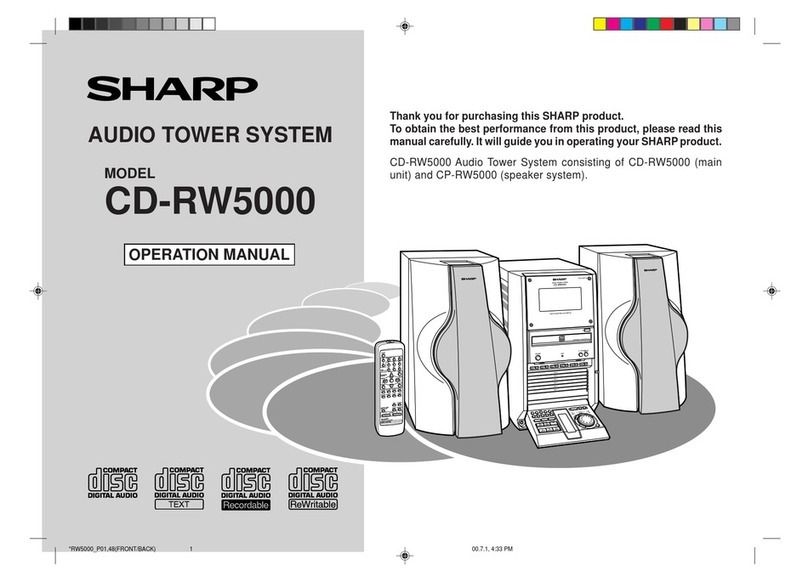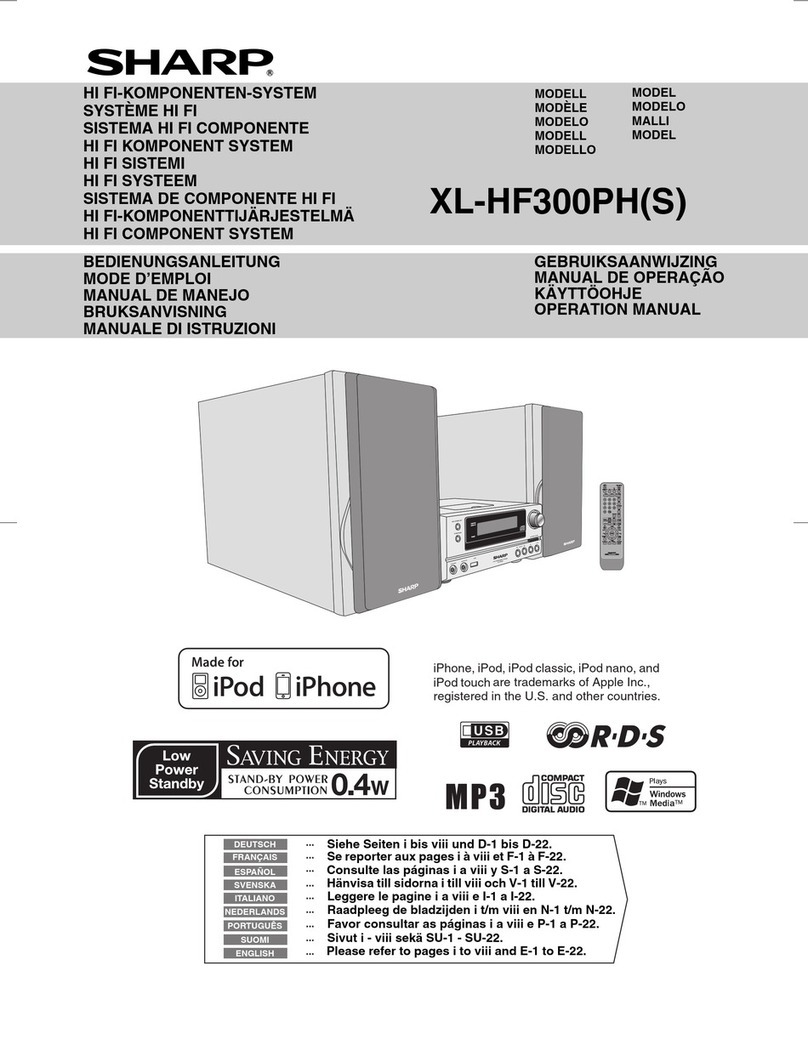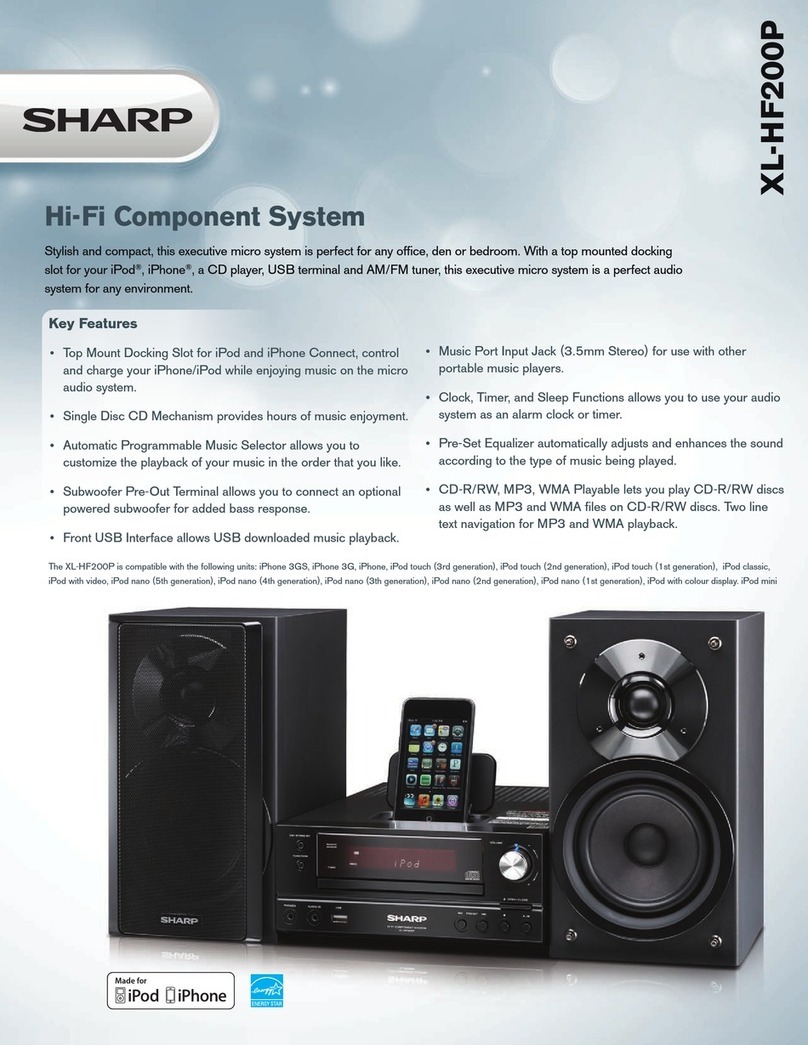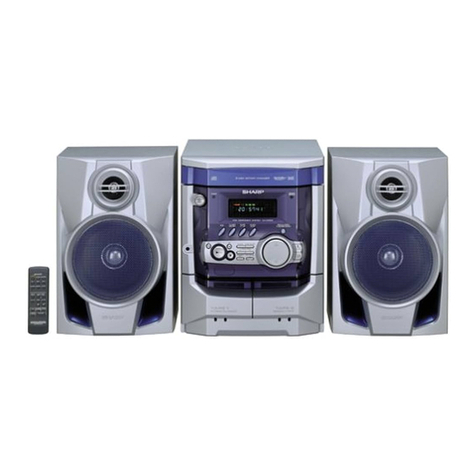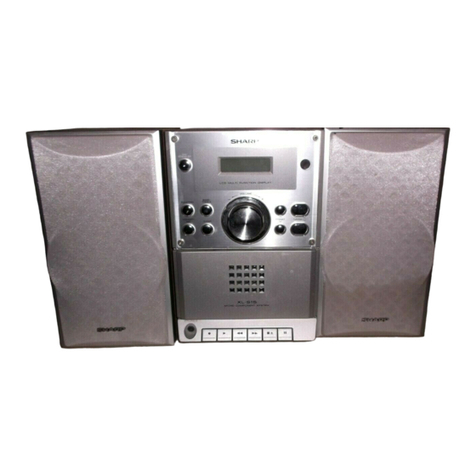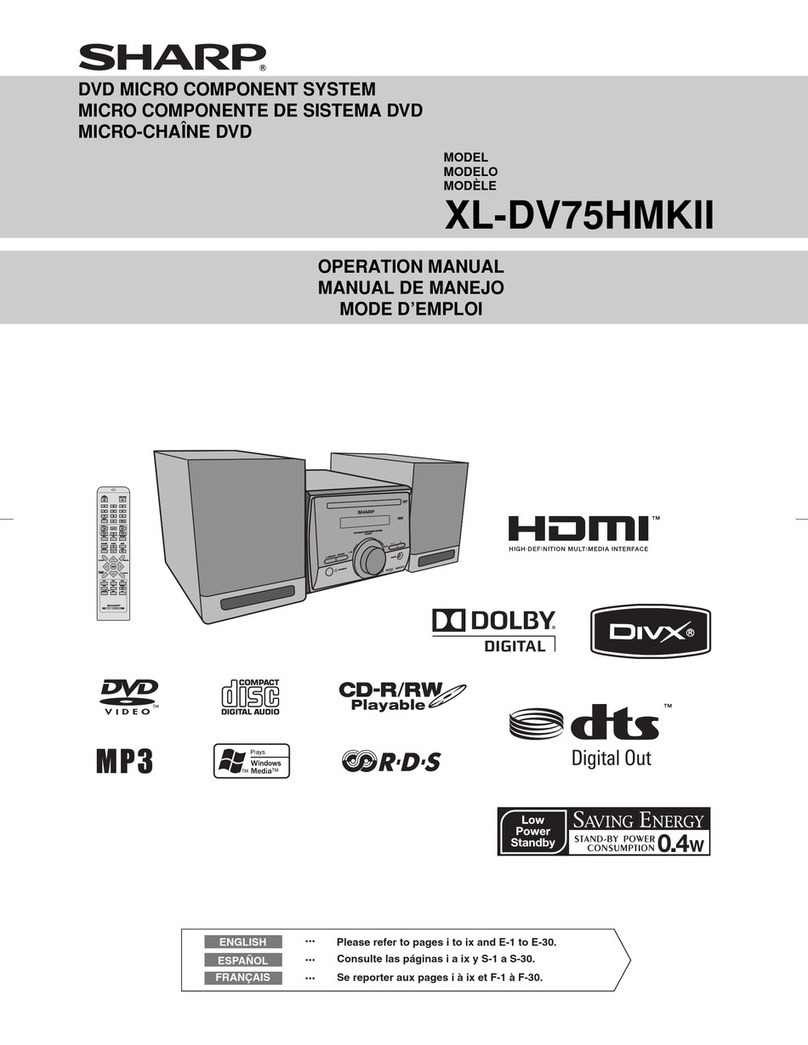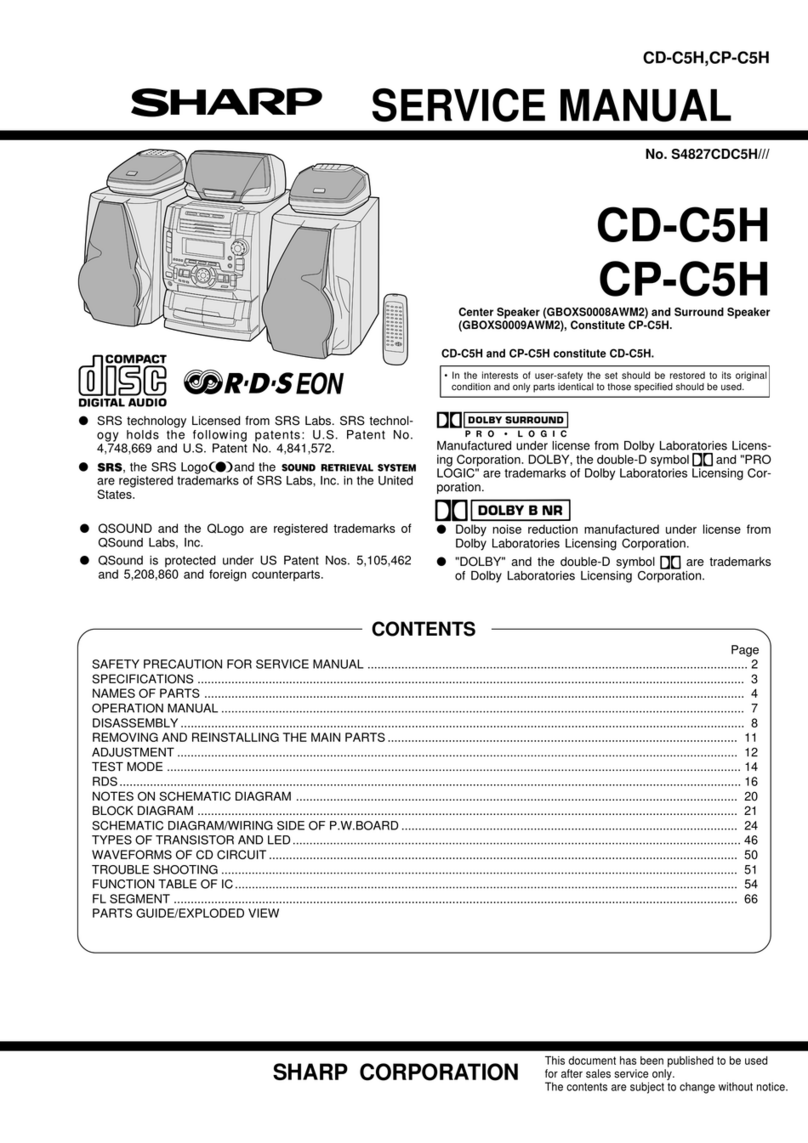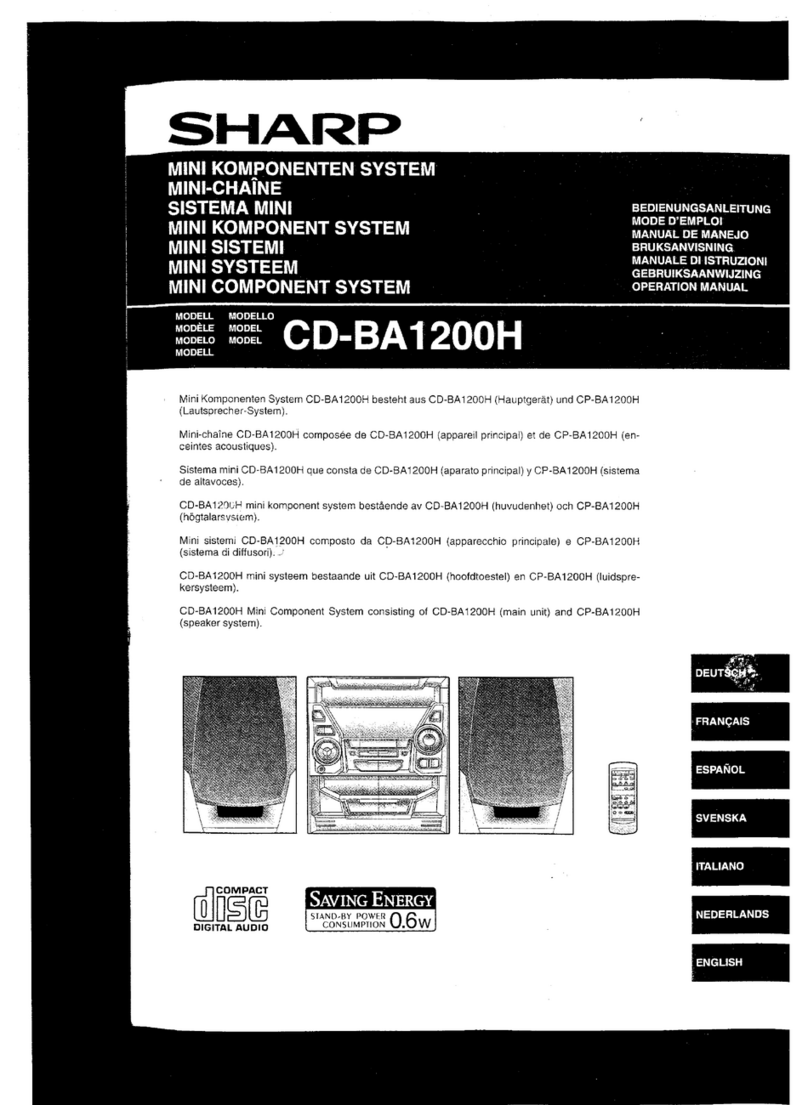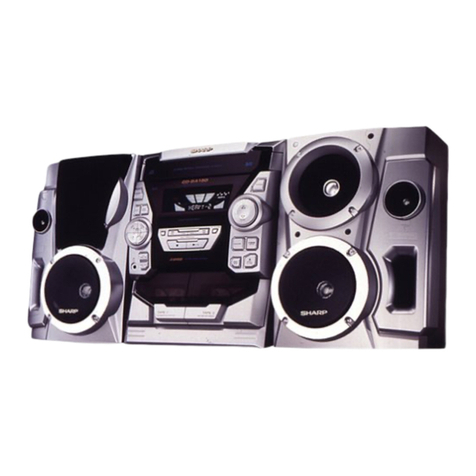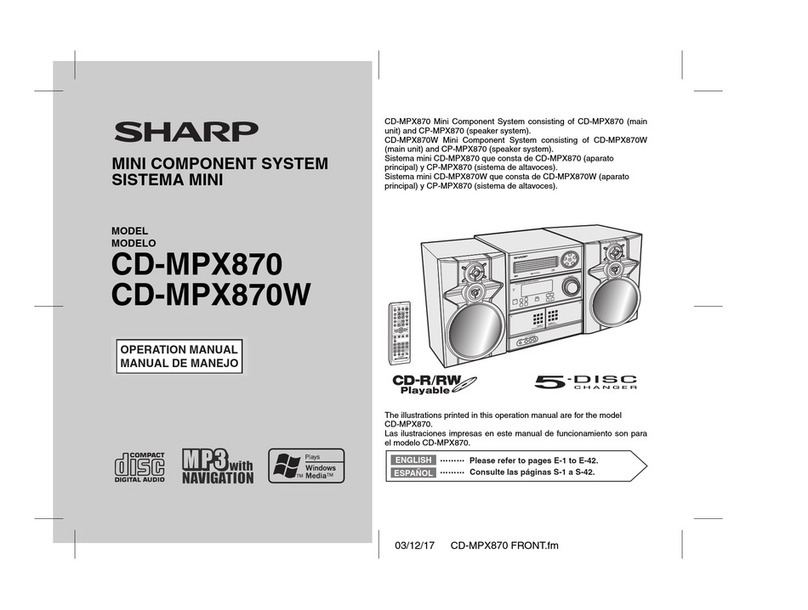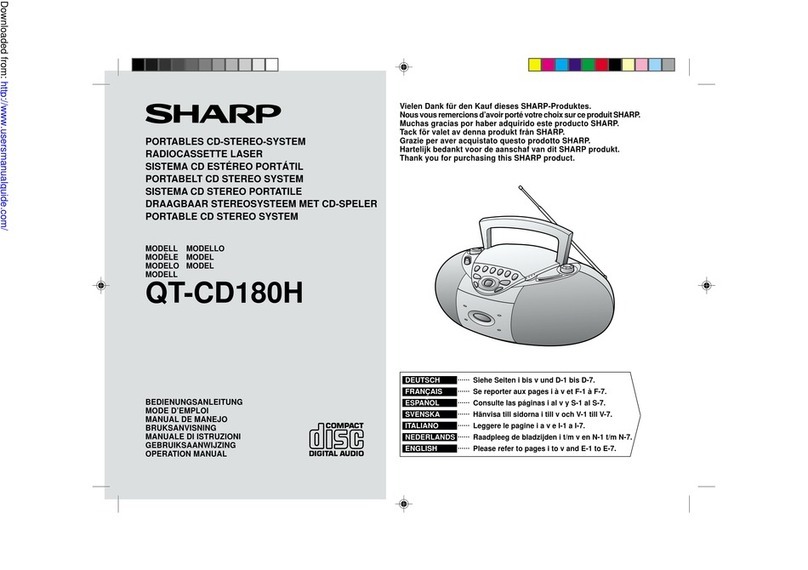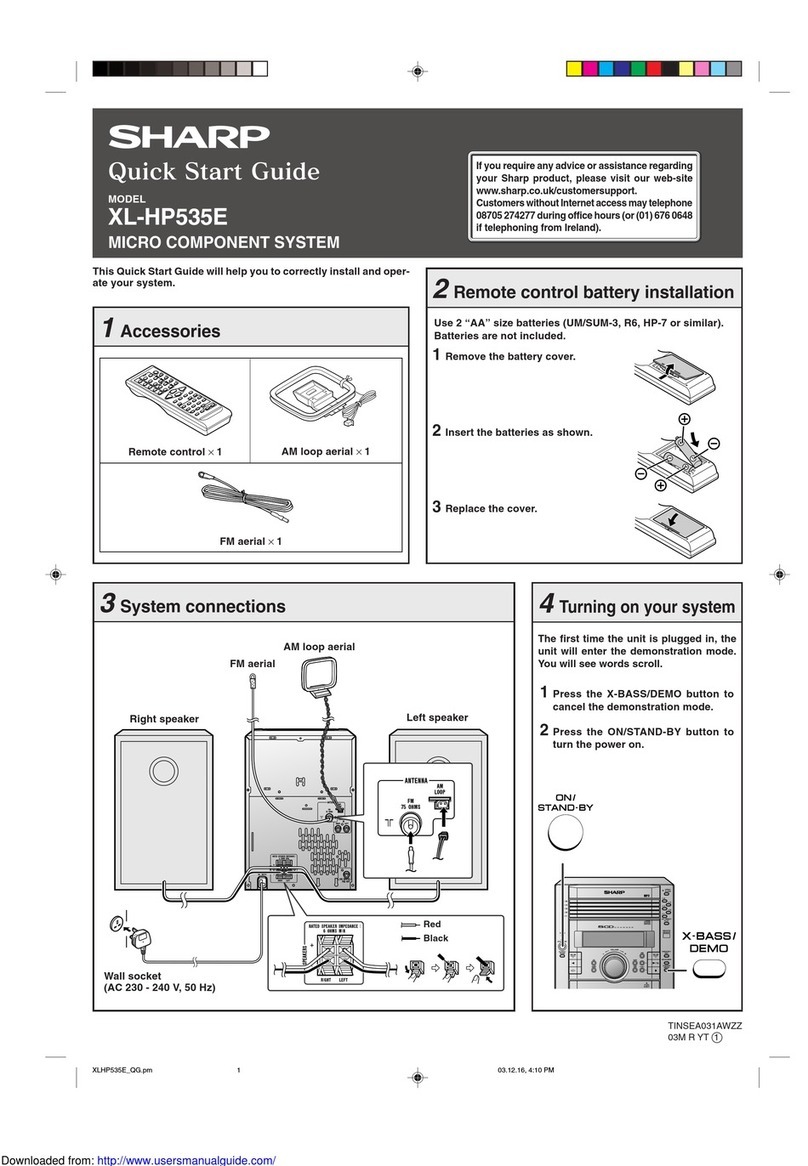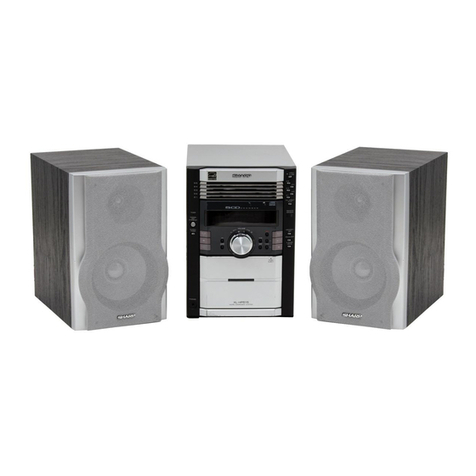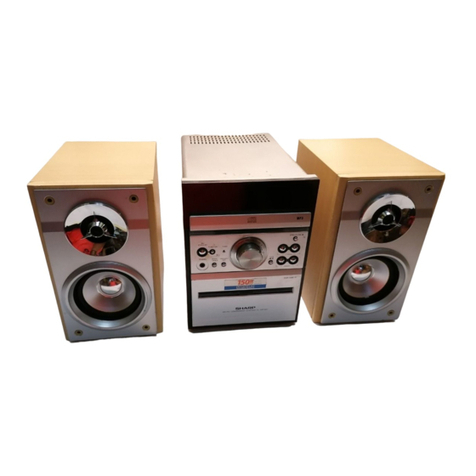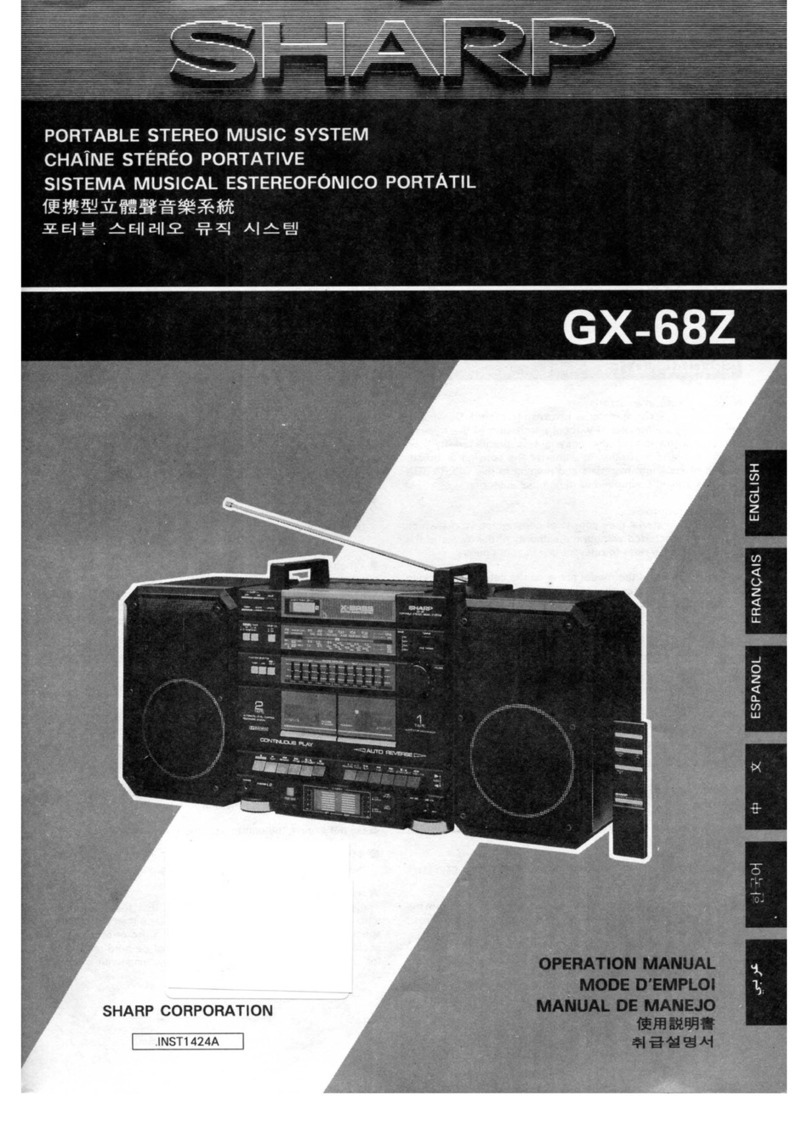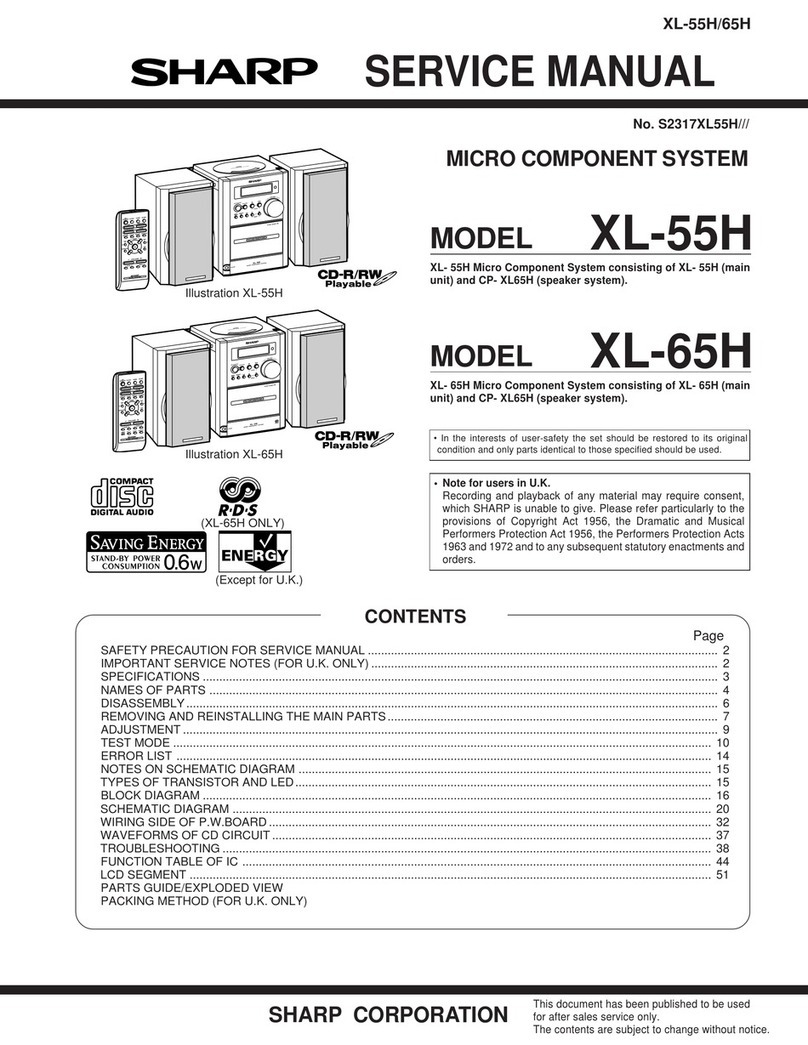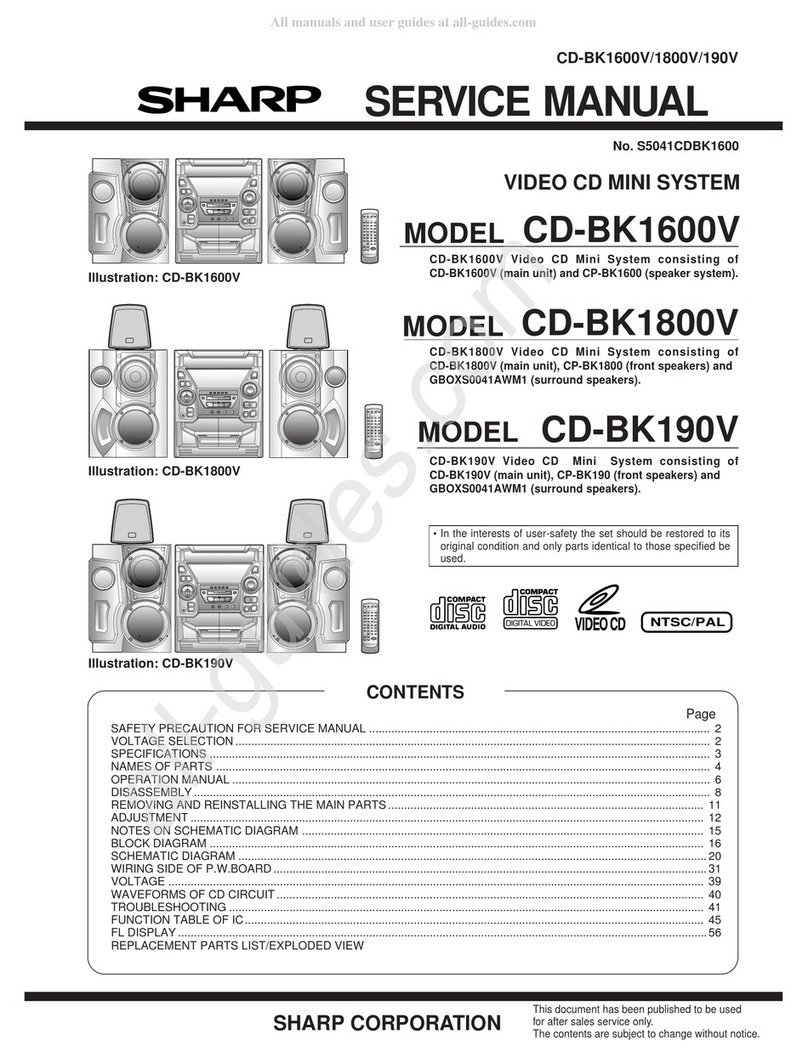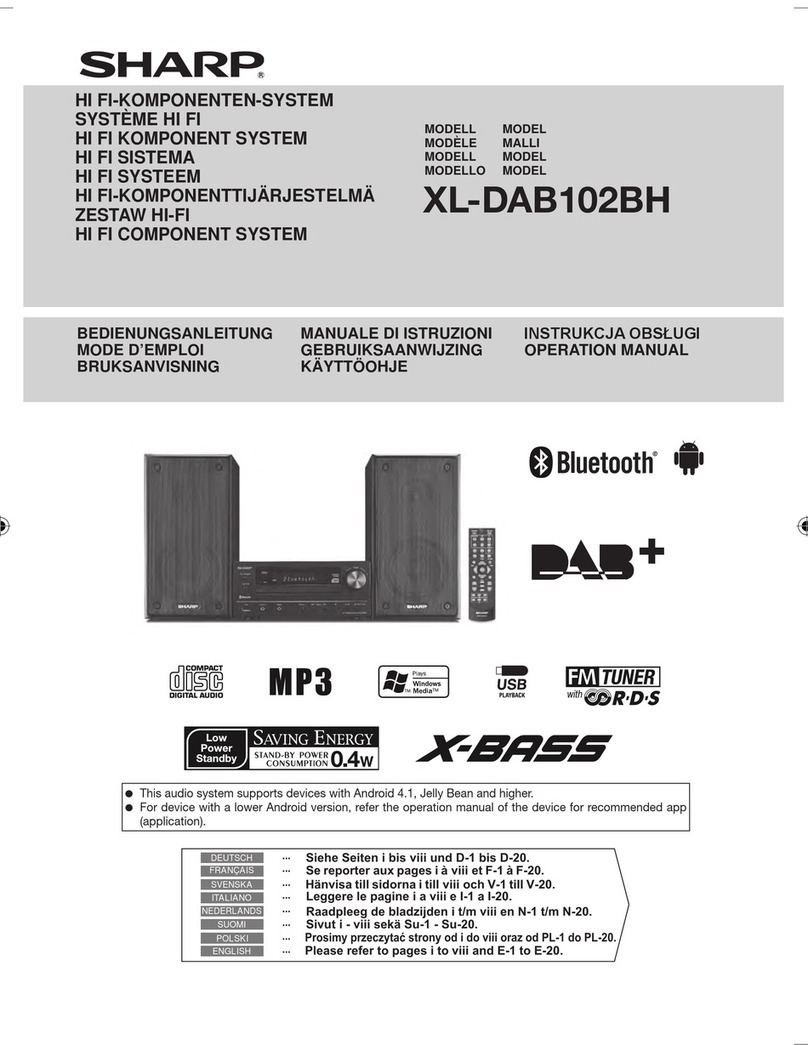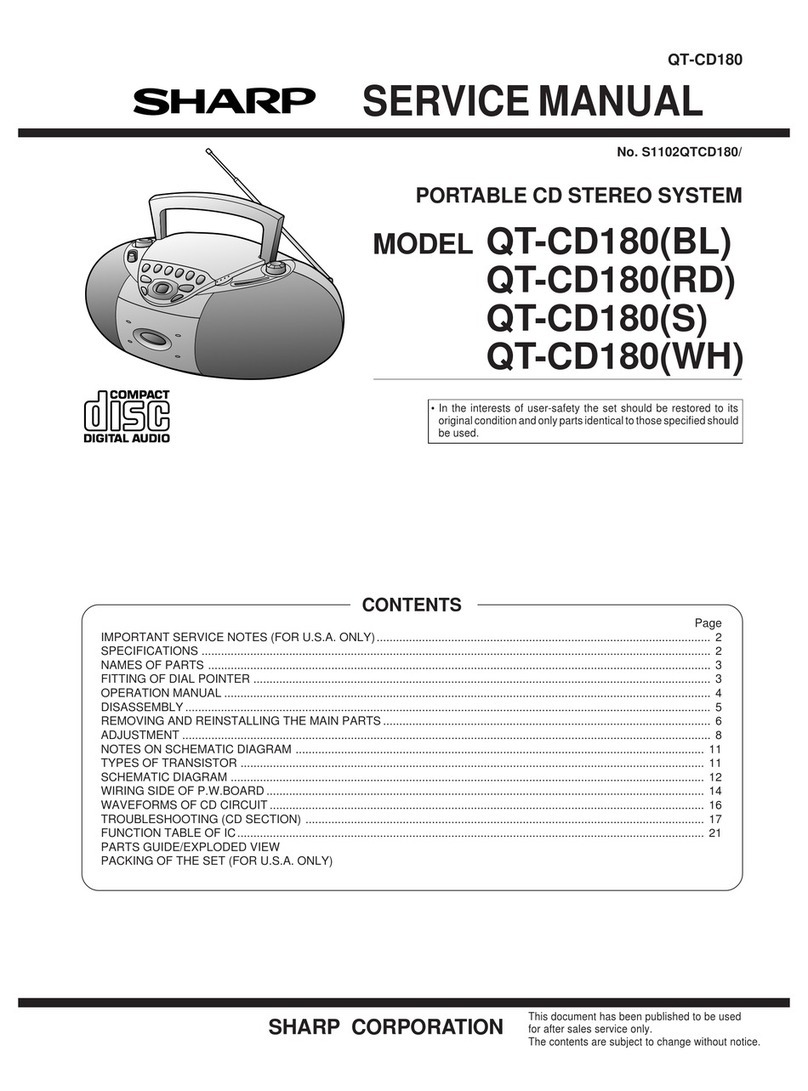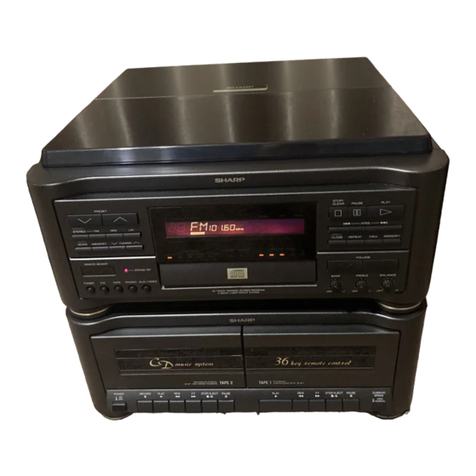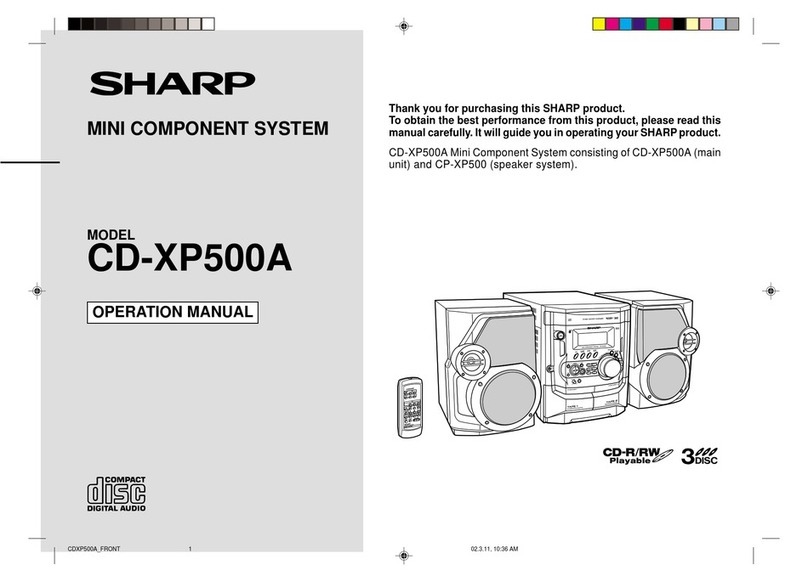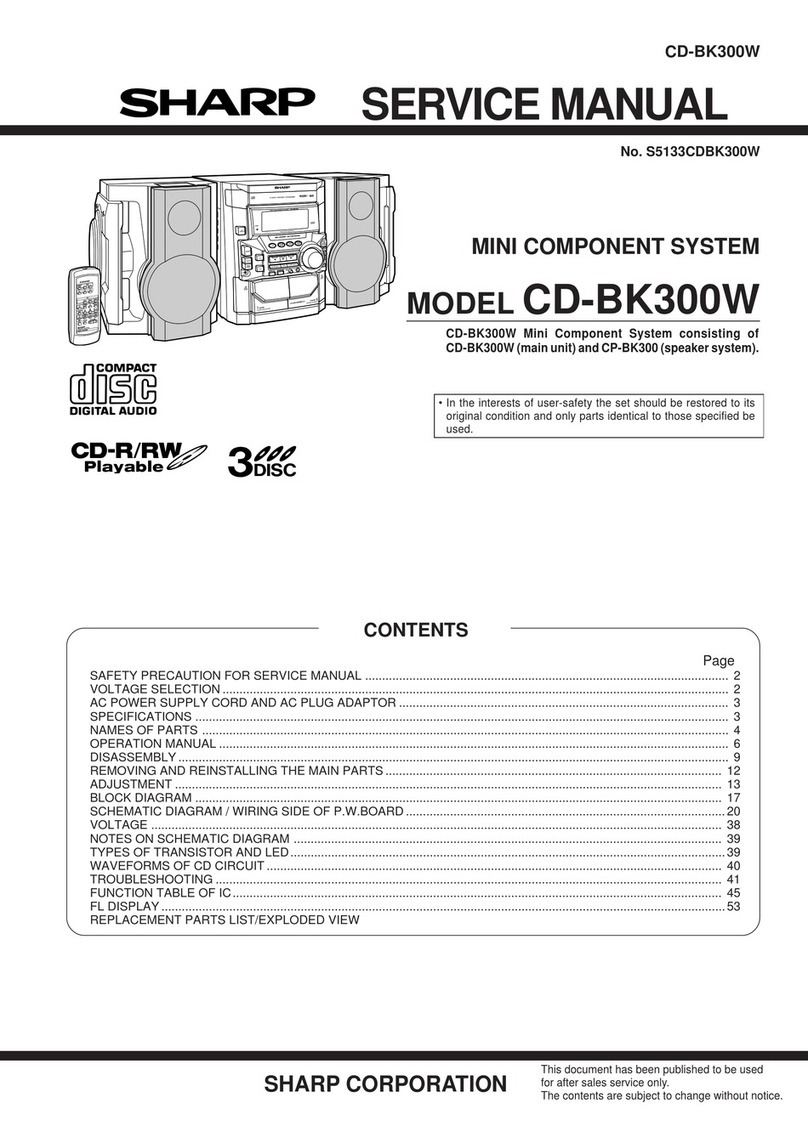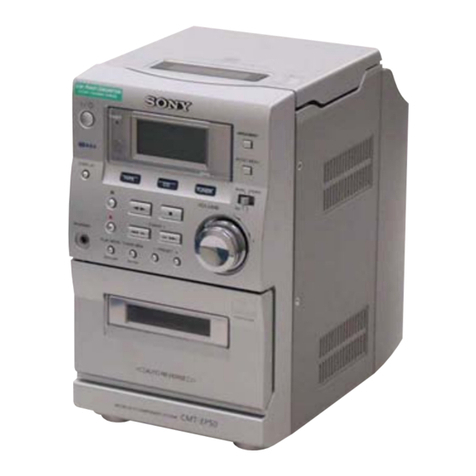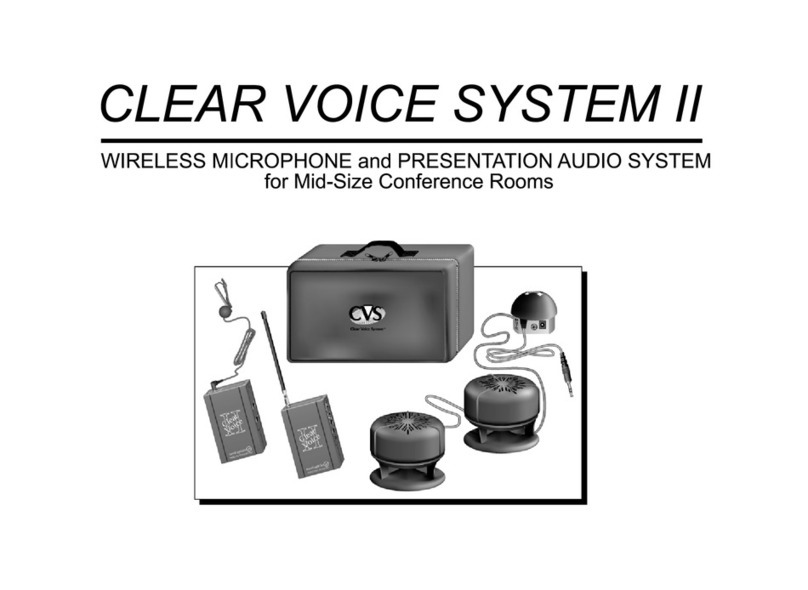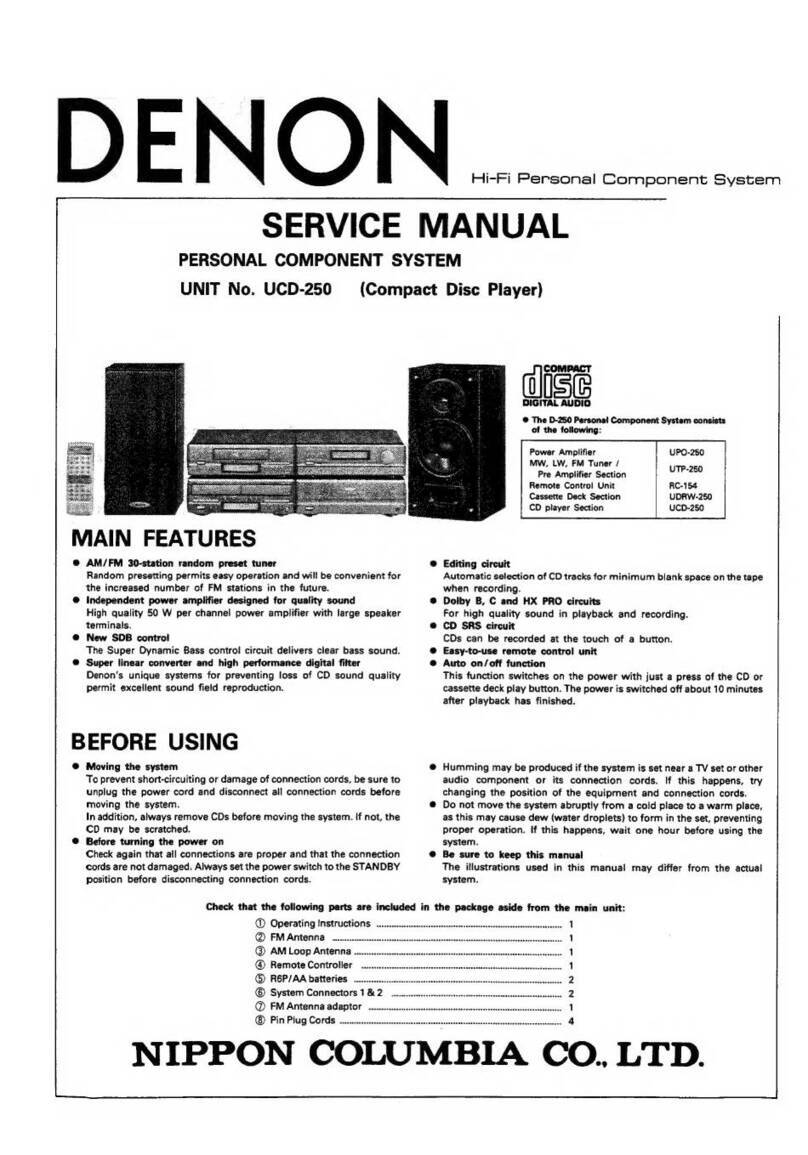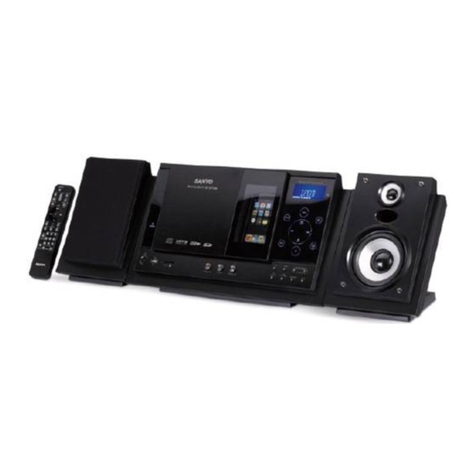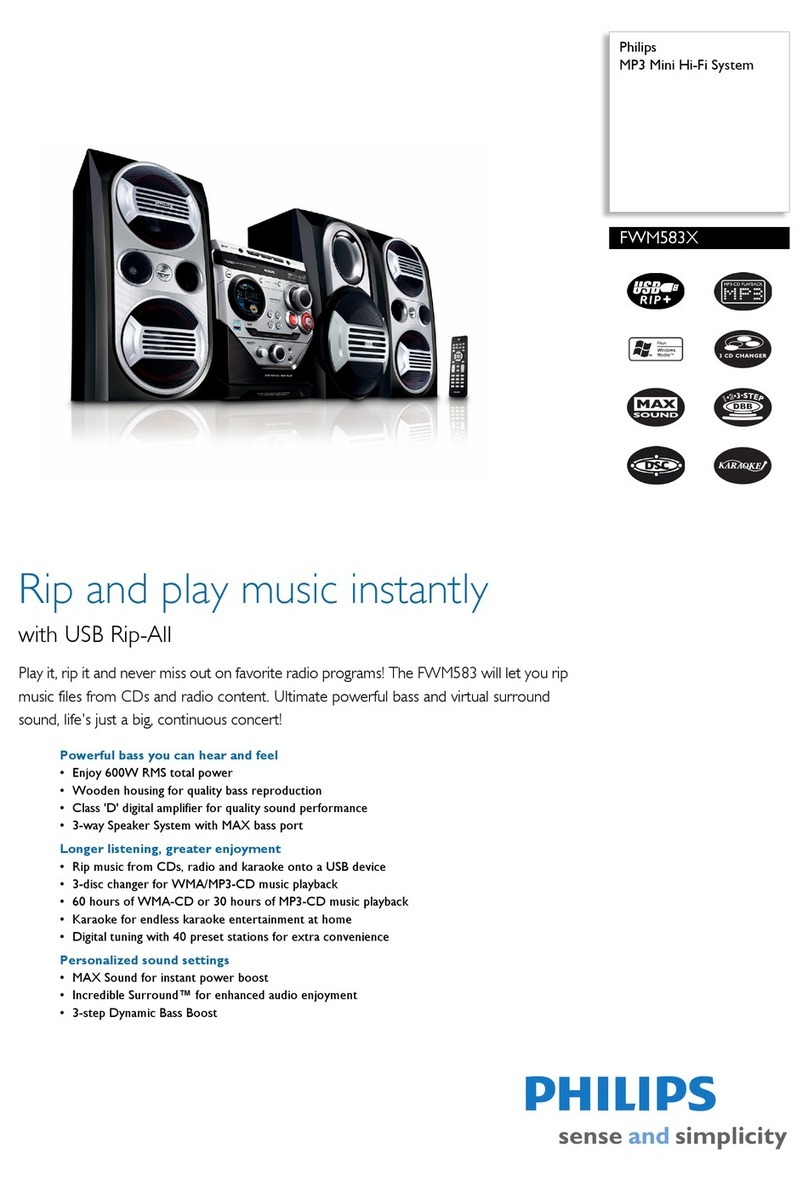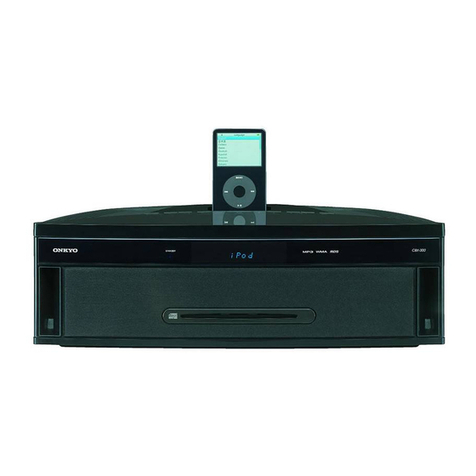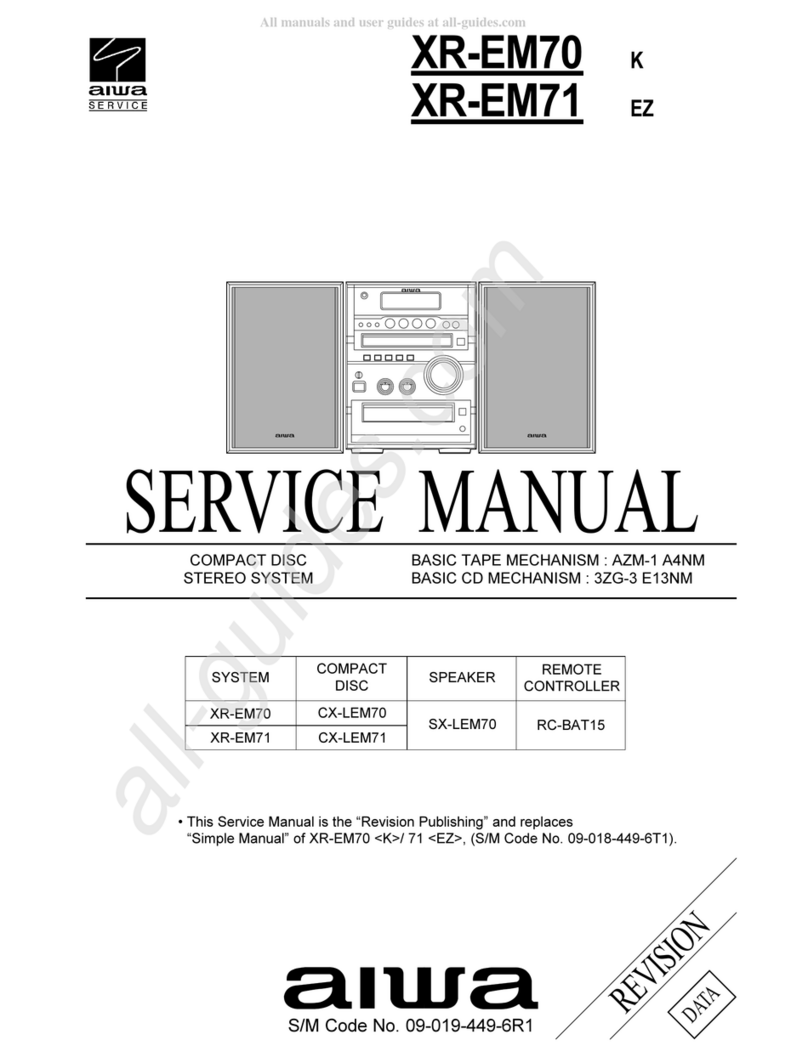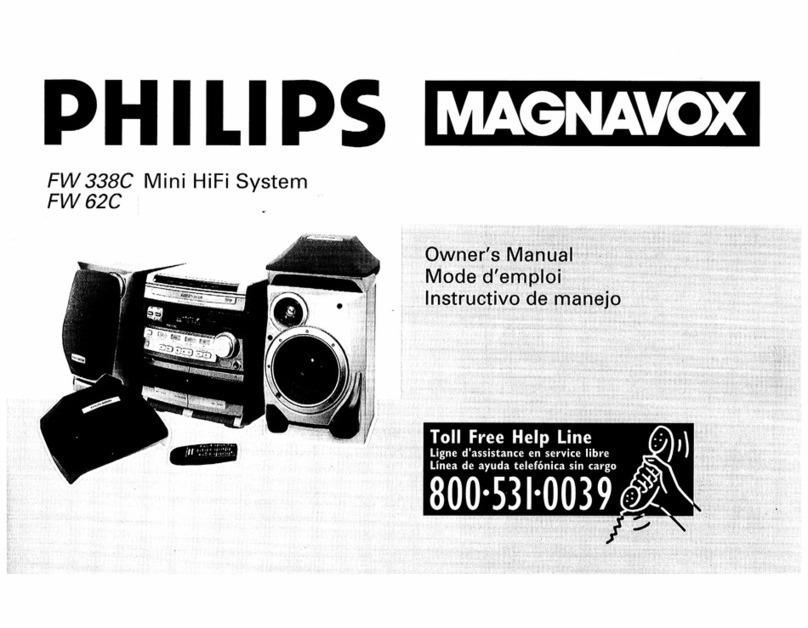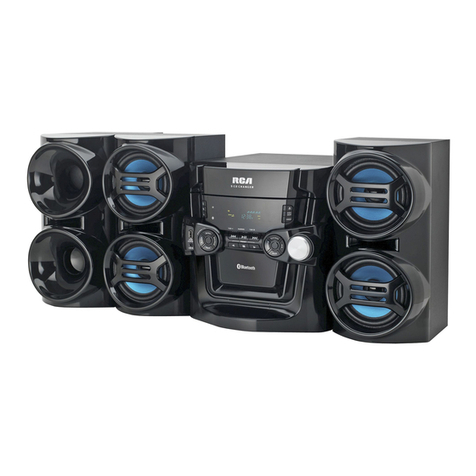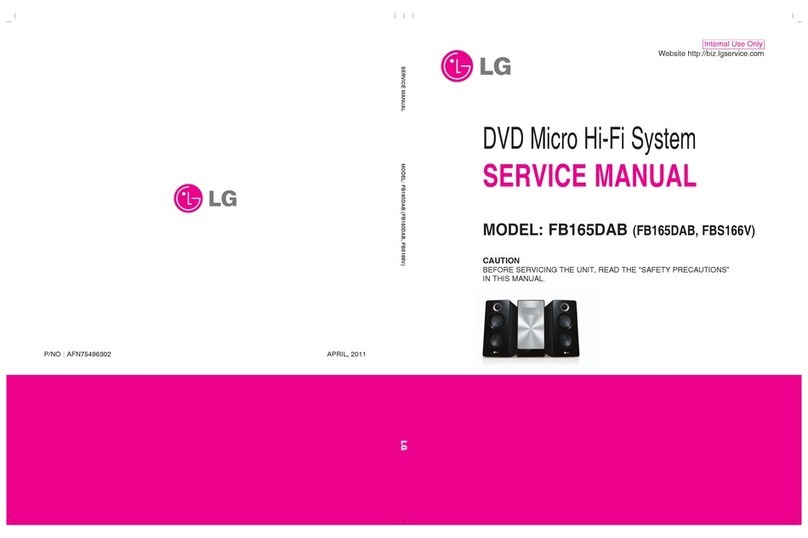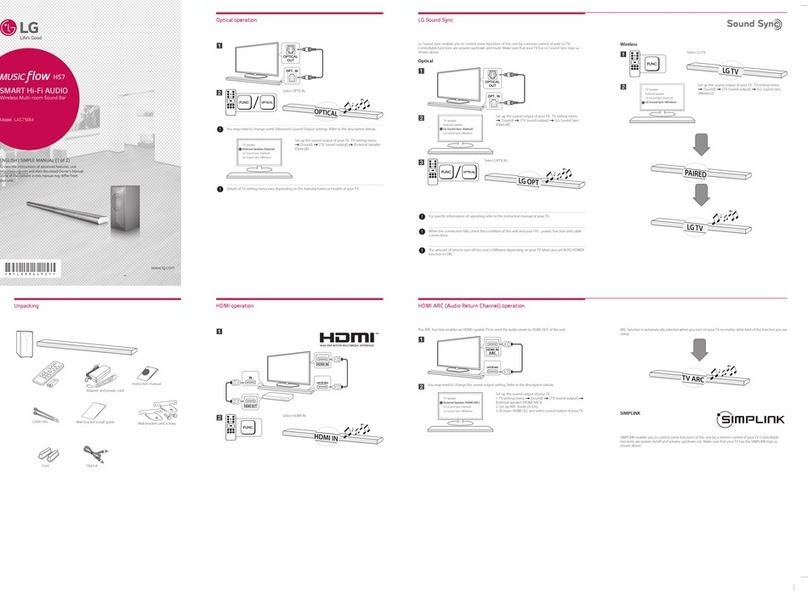
A.
cD-gmi&6ox
s
DISASSEMBLY
Caution on Disassembly
Illustration:
CD-C250X
Follow the below-mentioned notes when disassembling the
unit and reassembling it, to keep it safe and ensure excellent
performance:
1. Take cassette tape and compact disc out of the unit.
2. Be sure to remove the power supply plug from the wall
outlet before starting to disassemble the unit.
3. Take off nylon bands or wire holders where they need be
removed when disassembling the unit. After servicing the
unit, be sure to rearrange the leads where they were
before disassembling.
4. Take
suffcient
care on static electricity of integrated
circuits and other circuits when servicing.
m
STEP PROCEDURE
‘IGURE
6-l
1
2
Top Cabinet
Side Panel
(LeftlRiqht)
1
Screw......................
(Al) x4
1.
Screw.. ....................
(Bl)
x2
2.
Screw.. .................... (82) x2 6-l
03
xlOmm
3
CD Player
Unit/
CD
Traym
Cover
1.
Turn on the power supply,
open the disc tray, take out
the disc tray, and close.
(Note
1)
2. Hook
._.........._..........
(Cl) x2
3.
Hook . (C2) x3
4.
Socket . . . . . . . . . . . . . . .
(C3)
x2
6-2
CD
Player
Unit
4
Back Board
1.
Screw......................
(Dl)
x2
2.
Screw.. ....................
/DP)
x2 6-l
5
Headphons PWB
)
1.
Screw . (El) xl
6-3
Front Panel
(Note 2)
I.
Flat Cable ...............
(Fl)
x3
2. Socket ..................... (F2) xl
3.
Socket.. ...................
(F3)
x2
4.
Screw.. ....................
(F4)
x2
6-3
Disc
Tray
Hook
(
c2
)
x3
Display
PWB/
Switch
PWBI
Sub PWB
1.
Socket.. ...................
(Gl)
xl
2.
Screw.. ....................
(G2) x9
3. Screw...................... (G3) xl
‘7-1
FrontPanel
Tape Mechanism 1. Open the cassette holder
2.
Screw
.._.....
(Hl)
x6
7-1
7-2
9
Main
PWBI
1 Screw
.._._.__.___._.__.__..
(Jl
)
x5
Deck
PWBi
2.
Screw (J2) xl
Tuner PWB (with
3. Socket . . . . . . . . . . . . . . . . . (J3) xl
Headohons
PWB‘
Figure 6-2
10
CD Servo PWB
1.
Screw.. ....................
(Ki)
xl
2. Socket .....................
(K2)
it3
7-3
11
1 Screw
___.._.....__._.___.__
(Ll
)
xl 7-4
7-4
7-5
2. Cover . . . .
.._..._...._.....
(L2) xl
1. Screw
__._.__._,.,.,....,,..
(Ml) x4
(M2)
1.
Screw
.._..._._..._.____..__
(Pl) x4
12
Disc Tray
CD
Mechanism
(Note 3)
I.
Screw
___.._.._.,__.._._....
(Ql)
xl
7-5
15
Senser PWB
1. Screw ......................
(Rl) xl
2. Socket .....................
(R2)
xl
7-5
Main
m
i
PWB
Note
1:
if the power supply cannot be turned on,
f&
turn the gear
by hand as shown in Figure 7-3 to open the disc tray.
Note 2: Withdraw upward straight the flat cable.
+uner
PWB
(F4)e
03X8mt77
1
STEP
1
REMOVAL
/
PROCEDURE
1
FIGURE
j
Figure 6-3
1
Speaker
1.
Net
..........................
(Al)
xl
7-6
2. Front Panel .............
(A2) xl
7-7
3. Screw...................... (A3) x6
Note 3: After removing the Flexible PWB for the optical pickup
from the connector wrap the conductive aluminum foil
around the front end of Flexible PWB so as to protect
the optical pickup from electrostatic damage.
